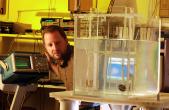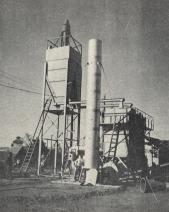An increasing amount of EES’ attention turned to "research for the sake of people" —research that revolves around the idea that science should devote more energy toward solving some of society's problems, rather than simply engaging in research for the sake of science.
A program of internally supported research was initiated. Its objective was to stimulate creative new ideas with potential for external sponsorship. But improving the human condition wasn't exactly a new idea at EES:
- Projects to mitigate pollution and utilize waste had long been prominent.
- A series of statewide meetings were bringing industry and business leaders the latest information about air pollution standards and the basic technology of air pollution control.
- A demonstration project involved site planning for residential and industrial development in rural Burke County.
The late 1960s were a period of student unrest on many college campuses. University research centers that performed sensitive U.S. Department of Defense work were often targeted by students. But at Georgia Tech, all was quiet. "I thank our conservative student body for that," said EES Director Maurice Long, in 1968.
Long, one of the architects of Georgia Tech's world-class reputation in radar and wave propagation, brought an emphasis on graduate education. "I've always thought of a research organization to be like a university hospital — a teaching organization," he explained. Along those lines, he added, came the idea that an effective research organization like EES must nurture a multidisciplinary approach.
At the GTRI Medical Device Test Center, scientists tested more than 1,200 pacemakers in developing shielding and filters to protect pacemaker electronics from outside interference. Their work continues today, as researchers help manufacturers improve compatibility between electronic medical implants and the growing number of electronic article surveillance systems used to track inventory and reduce theft.
A number of private companies, as always, sought EES’ assistance to solve a variety of problems in the 1960s. Among the diverse projects were:
- An arrangement with A.M. Braswell Food Company to develop an electro-mechanical system for organizing and aligning plastic bottles.
- Ryder contracted for spectrographic analysis of diesel truck components.
- Studebaker sought EES’ help investigating the mechanical and elastic properties of silicon carbide-reinforced epoxy composites.
- Scripto sought a study of butane lighters.
- Sophie Mae Candy Corporation hired EES to investigate improvements to its peanut-brittle manufacturing machines.
One of the most unusual projects involved Loveable Brassiere Company. It retained EES to help with bra design.


